| Foam rollers are one of the best fitness and wellness tools to come along in a long time. I first started using rollers 20 years ago as a way to massage my back and legs, which helped me to recover faster from hard training. Later, as a Pilates instructor, I learned that the foam roller can also be used for centering work, training balance, and for working your core. Nowadays, athletes and professional sports teams swear by the rollers as part of their training and you can find them in just about every gym and sporting goods store. The popularity of foam rollers has led to there being many different types of rollers available, which has made it difficult to know which kind is best for you. So, before we get into the exercises you can do with a foam roller, I want to give you some information about them, and then a list of some of the different kinds out there, along with an image and description for each, along with my personal recommendations.
2) Black High Density Foam Roller: 6” x 36” ($15-30)– This is a little harder than the white one, which is too hard for most people. It is basically the same material (hard Styrofoam), only black, so you can’t see the dirt as well (image 2). 3) EVA Foam Roller: 6” x 36” ($30-38) – a higher quality roller, EVA foam rollers are closed cell foam, firm but have a pliability that is much more comfortable than the standard rollers. They also keep their shape and are more durable as well. They come in marble blue or green colors, and also in blue with a textured hexagonal surface. (see images 3 and 4) 4) Trigger Point GRID Foam Roller: 6” x 12”, or 6” x 36” ($39.99) – a more expensive branded foam roller made differently in that it has a hard plastic inner shell that is coated by a molded rubber coating with patterned ridges. I have this one and truthfully, I find it a little hard and the ridges don’t seem to make any difference (see image 5). 5) Rumble Roller: 6” x 12”, or 6” x “36 ($45-75) – This roller is also made with a hard inner shell that is coated with hard molded rubber. The big difference is the large “bumps” on the roller that people use to press into the knots or trigger points on their legs and hips. I also own this one, and it is not suitable for use on your back, just with your hips and legs, and only if you can take intense pain (see image 6). From my experience, a large EVA foam roller is the most user-friendly roller that most people should start out with. Normally, I would recommend using Amazon to find these, but the choices are very confusing and it is not easy to know the quality of the items. Also, it is a good idea to get a Foam Roller exercise book or poster that illustrates and explains how to use it properly. To that end, you can get both a high-quality EVA foam roller with an illustrated poster of exercises for only $35 at this website link http://www.yogilates.com/store/p28/Deluxe_Foam_Roller_with_Workout_Poster.html FOAM ROLLER EXERCISE VIDEOS: To get you started learning how to use a foam roller, I have created three video tutorials on my YOUTUBE CHANNEL that show you some basic lower-body massage work, some core work, and some centering exercises. All the exercises are suitable for beginners, but if you have any special conditions, such as osteoarthritis, back pain, or balance issues, I recommend you talk to your health professional for advice before trying the exercises. Please let us know if you found this article helpful, as we appreciate your comments. And please share it if you enjoyed it. |
|
0 Comments
It’s been quite a year! Actually, about five years. That’s when I decided to stop presenting and touring my workshops around the world, and focus instead on teaching full-time and studying more deeply the science of the mind and body and ways to optimize health, wellness, and longevity. I took more educational certification courses and worked with hundreds of clients from all backgrounds and various conditions. I gained valuable experience, knowledge, and many more practical skills that I use in helping clients and students to improve their health, fitness, and awareness. Ultimately, I became re-inspired with the primary purpose behind what my teaching is about – which is to help people achieve their inherent potential.
So, I apologize for not posting on my blog or sending out the Yogilates newsletter for a while, but things are about to change for the better. I’ve been able to re-arrange my work hours so that I finally have time to write again, and I will soon be ready to start offering workshops and teacher trainings as well. Please check out my new class schedule, which includes teaching now at the Westside YMCA, and in Nyack at the JCC of Rockland, and I also offer private lessons at both. Another opportunity that has been offered to me is that of teaching CE courses for Hunter College, and helping to develop the Fitness Instructor Certification program that they now offer. Writing and designing course material is something I enjoy, and having freedom to add my integrative approach makes me feel my contribution will add to the evolution of where fitness needs to go. Lastly, one of my new jobs is as a contributing writer for the health, wellness, and lifestyle blog Women’s Voices For Change.org. I’ve been writing a fitness/lifestyle article every week since the end of July, covering a wide variety of topics that generally are meant for women over 40, though the information can be useful for anyone. Please check out some of the articles under the “fitness” header and let me know what you think. Thank you! Recently, there has been a plethora of articles in the media, such as "Train This, Not That: Leg Edition", published on the ACE Fitnovator Blog, in the category of #health and fitness, that claim that a person is wasting their time or, worse yet, risking injury, by doing #isolation exercises when they would get much better results, and reduce potential for injury, by instead doing compound movements. One of the “bad” exercises that is always referred to in the articles is the Leg Extension machine (pictured above). You know, the one where you sit and have a padded lever that rests against your shins and you extend your legs from the knees. This exercise isolates the quads and is often prescribed for people to help them rehabilitate from knee injury. The argument used in these articles is that this machine can put a lot of stress on the patella tendon, and that isn’t as “effective” as other leg exercises like squats and lunges, which use more muscles. The Abductor and Adductor machines also get the thumbs down vote, as probably would most other machines that isolate muscle groups. But the truth is that isolation exercises are often safer than compound, “closed-chain” movements and the arguments made in the articles don’t responsibly explain that different exercises have different purposes. Depending on why you are doing the exercise, isolation exercises could actually be more effective for a person and provide a safer alternative to more complex exercises.
Take for example the much-maligned Leg Extension machine. For anyone who has leg joint issues (ankle, knee, or hip), this “open-chain” exercise machine is an excellent alternative to the standing leg exercises like squats and lunges, which can put pressure down on the joints and lead to pain. As with any exercise machine, you need to be careful to set the seat and lever appropriately for your size, and you should keep the weight moderate and range of motion limited to start. Sure, a person could do this exercise wrong, but they could just as easily do a standing leg exercise with bad alignment and risk even greater injury because it isn’t just the knee that can get hurt, the other joints as well are at potential risk, as is the lower back. Apart from injury prevention, muscular imbalances and weaknesses can only be corrected through isolation exercises. If one is weaker on one side, it can be addressed by doing isolation exercises on the floor or with machines, whereas with compound movements, one will never correct the imbalance. Sometimes, before progressing to more complex movements, it is suggested that certain muscles like the gluteals or the transverse abdominals, be targeted with isolation exercises that get the muscles to fire properly. This helps exercise efficiency and effectiveness. Another argument that some have made is that standing exercises necessarily develop greater proprioception and awareness and are thus more functional. By nature, doing standing work requires a certain amount of balance skill that is not inherent for sitting or floor based movements, although just standing doesn’t necessarily improve overall body awareness and control. In Pilates, whole body awareness is always taught even when doing what would technically seem to be an isolation exercise. For example, when performing the Side Kicks in the matwork series, one is trying to only move the leg while the rest of the body must stay still. The act of creating stability and balance in the rest of the body while sweeping a fully extended leg forward and back, requires utmost attention to engaging all the core muscles on the front and back of the body, and from the toes to the head must remain in control at all times. It may look like it is isolating, but Side Kicks develops whole body awareness as much if not more than any traditional standing leg exercises. It would be very easy for me to go on and pick out several standing leg exercises that I believe put undue risk to the participant, and for me to offer alternatives that I believe are better, but I think it is irresponsible for fitness experts to label some exercises as bad and others as good. It all depends on how you do them and for what purpose. If all you care about is working as many muscles as you can with each exercise, than compound movements will be your ticket. If you want to target weaknesses or imbalances in your body, or you need to work on stabilization, than isolation movements are a wiser choice. It really depends on your individual needs and on the particular focus you are bringing to your workout. Be well, be safe, be smart, and have fun!! “open-chain” exercises, vs “closed-chain”. For those who don’t understand the difference, “open-chain” is where the endpoint (usually the hands or feet) are free to move during the exercise. “Closed-chain” exercises are where the endpoint is fixed during the exercise, so standing exercises with the feet planted, or push-ups where the hands are on the floor, are prime examples.  Finally the long, cold winter has started to abate after several months of way below normal temperatures. For those of us in the frozen Northeast, the change is very welcome and people are ready to be take off the heavy coats and catch some sunshine. There is one thing though that happens silently as the season changes and that is that as the temperatures climb, our bodies don't need to burn as many calories to keep us warm. This means your basic metabolism will slow down with the change to spring temperatures. The calories you burn just to stay warm and be alive is called your Basal Metabolic Rate - which is your daily caloric needs if you just rested all day. The rate is higher for bigger people ( or those with more muscle) and is lower for smaller people. But, everybody is going to need more calories in the winter than in the summer because your body needs the extra energy to keep it warm in a cold environment. Most of us make up for the extra calorie needs of wintertime by consuming foods that are a little richer - more fat in the sauces, more hot chocolates, etc. We also tend to be less active in the winter so we hold on to more of the calories we take in. However, as the season changes, we need to be mindful to reduce our caloric intake to compensate for the rise in temperature and our slower metabolisms. Especially in the beginning of spring when, in just a few days of warmer weather, we can put on quite a few pounds if we just keep eating the way we are used to. Have you noticed yourself feeling fuller after your meals? I believe the body talks to us all the time and if we listen, it will tell us to eat a little less, forgo that dessert or that extra drink. Your body wants to stay in balance with its metabolism and weight, and if you listen it will help you to make a healthy transition to the new season. Consciously serve smaller portions and substitute out comfort foods like lasagna or breaded pork chops with baked chicken or fish and steamed or sautéed vegetables. Also be aware of flavored drinks, coffee or teas (hot or cold) that can contain extra calories you don't need. Just go back to water. Eventually, you will naturally change over to cooking and eating lighter fare and you'll be more out and about so you'll burn a few more calories that way too, but the sooner you do, the better you'll be able to keep control of your weight and feel a healthy balance. 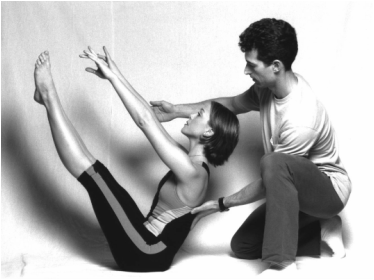 One of the main ways we become effective instructors is from practice – you can’t authentically teach what you haven’t tried yourself. But beyond training and subject knowledge, we also become better teachers by studying the art of teaching. It is a truism that there is no ONE best way to teach a subject(or an exercise) because different students learn in different ways. One way that we, as instructors, can better teach Pilates to as many different people as possible is to explore different styles and models of teaching. Obviously, a good education program is essential, but that is only the very start of your learning about how to effectively teach people to get the most benefit from Pilates. There are so many different exercises to learn, and so many different apparatus, and then there are various protocols for different conditions, etc, etc,. Even with hundreds of hours spent on studying, someone fresh from a teacher training program will still need years of experience to master the skill of comprehensively teaching Pilates to the general public. Unfortunately, new instructors often come right out of school and, using savings or loans from parents, open their own branded Pilates studio. They feel empowered by all the Pilates knowledge they’ve acquired and feel they only need to apply their business sense and go for it. Sometimes it even works for a while, especially if there is a demand for Pilates in the area. More often, the business starts to stagnate and many close after a short period. The problem is that just relying on what you’ve learned from one school leaves you very limited when it comes to the real world. Pilates is a very dynamic and evolving business. The people who are successful in it all know this and have accumulated lots of outside experience and adapted to new ways of presenting and selling. Remember, the primary purpose people are training in Pilates is to improve their health and fitness. Pilates exercises, Pilates technique, Pilates equipment, and the Pilates system as a whole all have the goal to improve important aspects of physical health and mental conditioning. Knowing all the exercises in sequence on the Reformer for different levels is quite an accomplishment. However, it is a mistake to think teaching a routine by rote is the primary goal of your lesson plan for a client. It is understandable to get caught up teaching clients to master the routine considering how great it felt as a teacher in training to perform the advanced routine. However, the reality is there will be few clients for whom this workout will be appropriate or sufficient. In Pilates, using the mind to memorize a sequence and flow is, I believe, an important part of the training method. But we always need to keep in mind the individual needs of the client. As an instructor, we need to be attentive, adaptive and creative and be careful not to fall into patterned routines and directives that don’t always fit the particular needs of the client we are working with. Being able to get outside the box and having a deeper well of options to choose from to successfully teach people of all levels, comes from years of teaching with an open mind and a desire to continue learning and growing. Without a doubt, one of the main things that has helped me become better as teacher has been working in studios with other instructors from all different backgrounds and watching and learning from them. Most teacher training programs require some practical observation, but the few weeks are not really enough, and usually you are watching teachers from your own school so you don’t necessarily learn much new. I have always felt a need to broaden my education and have attended many conferences and workshops from teachers all over the Pilates and mind/body spectrum. This was helpful to my progress as a teacher as it helped to open my mind to different perspectives. But actually working on a day-to-day basis next to other instructors with different styles, different backgrounds, and from different countries, and of different ages has influenced me in a very practical way that has been invaluable. When I find an instructor particularly interesting, I will take a private lesson from them, in addition to my regular lessons from my teacher. Working with many different clients with different challenges and conditions for many years will also teach you a lot about how people respond to the Pilates that you know. However, you will be less limited and more versatile if you’ve gathered more experience and knowledge in the field from other schools and instructors of varied backgrounds. This includes working with apparatus from different manufacturers. I have found that each different manufacturer offers different qualities for the same apparatus. There is a learning curve with each one and it behooves you to practice with each. I personally prefer the Clinical Reformer from Balanced Body because in addition to being able to change gears, the moveable footbar offers greatest flexibility for clients of different heights. But I find benefits in other versions from other quality manufacturers as well. The important thing is to not get stuck on one kind or to think one style is the ultimate. Use your own judgement from experience with them. Try as many as you can and be objective on the quality of its parts, how it is made, and how it works, and think about how it may suit the different clients you may work with. Does it fit clients of all sizes and abilities? Does it make offering modifications easier? What can it do that other versions can’t? For smaller studios, having a limited choice is understandable. For larger studios, I think stocking a studio with only one version of an apparatus or only one manufacturer is a mistake in the same way as only having instructors with the same background. In conclusion, I have worked in various studios now for over 16 years and have met hundreds of other Pilates instructors. I can’t thank them all enough for all that I have learned from them and been inspired by them. And this goes for the first generation teachers and the newbies as well. If you bring your passion to teach and to help others become fit and healthy, Pilates will reward you in kind. Remember that Pilates is practiced and taught all over the world and offers a wealth of benefits and experiences. So get out there and absorb all you can, and maybe, don’t be in such a hurry to open up your own studio. By Jonathan Urla
Once again I find myself dumbfounded by another misleading article on flexibility and it’s so-called “dubious” benefits. The title of the article is “Why Stretching Doesn’t Make You More Flexible”, which is an obvious “shock” statement meant to get your attention because it contradicts conventional thought. I read the article on a popular news website The Huffington Post, but the article was originally written for LiveScience.com and then reposted on Huffington. The article is targeted toward a general audience, but simplifying the science doesn’t include changing the premise and using selective information that is incomplete or doesn’t substantiate a coherent argument. The author begins the article saying that certain people (athletes, yogis, etc.) stretch to help their performance. But then she postulates, “But does stretching really prevent tight hamstrings and stiff shoulders?”. This changes the premise to “prevention”, as opposed to that of “increasing flexibility”. These are two different purposes and the “prevention” idea is never addressed. And one amazing thing about this article is that all of the experts she quotes and refers to say that stretching does increase flexibility, so the title is contradicted throughout. In the article, she quotes two different yoga instructors and one scientist. Although the author tries to confuse the issue by claiming scientists don’t know how or why stretching improves flexibility, the explanations presented by the experts are actually pretty clear on how the body adapts to stretching to make you more flexible. Basically, as anyone who has tried stretching can attest, when you first begin a stretch it hurts, but the more you practice it, the less it hurts and you can lengthen the muscle more. One of the biggest mistakes made by the author is that she equates the action of “lengthening a muscle”, which is what you do when you stretch it, with the actual “length of muscle tissue”. She correctly states that, “Muscle tissue attaches at fixed points in the bone, so the entire muscle complex can’t get permanently longer.” But the length of a muscle is NOT a measure of your flexibility. Flexibility is a measure of the ease with which a muscle can move from a contracted state (shortened) to a fully extended state (lengthened). The study results referred to in the article are measuring only data on the length of the muscle, not it’s elasticity or flexibility. Because she doesn’t let go of the premise that flexibility and length of a muscle are one and the same, she then states, “So, if muscle fiber doesn’t get longer as a result of stretching, why does stretching seem to increase people’s flexibility?” I italicized the word “seem” because it implies that the increase in flexibility is not real. This is so disingenuous, and goes back to the whole misleading title selected for the article in the first place. The fact is the nervous system is part of the body and muscles have nerves and changes in pain reflexes is not in our minds, but actually part of the very real adaptation process of training, and fortunately, this is adequately explained later in the article. In the last few paragraphs of the article, the author tries to give some guidance on the best way to stretch – PNF vs static stretching, briefly referring to one study showing PNF helped gymnasts. However, she completely fails to properly describe what PNF is, saying it involves tightening (contracting) the muscle at the same time as you try to lengthen it. That is not how PNF works, which involves a short period of contraction (2-3 seconds) of the restricted muscle, and then relaxing that muscle and contracting the opposing muscle. This is repeated several times for noticeable improvement in ROM. For a more thorough description of PNF see this Wikipedia link. I believe as this author is working for an educational/information website, it is important to note the serious misinformation in this article. Lastly, the author incorrectly states that loading a muscle with more force at a greater level of extension “tells the nervous system that the muscle can be strong and safe at that level of extension”. While she claims this information was told to her by the yoga instructor, I believe she misunderstood her. More force at greater levels of extension will cause the nerves to tell the muscles to reflexively tighten even more to protect them from over stretching or pulling. The greater the range of extension in a joint, the more reflexively will the nerves tell the body to tighten up to protect itself. PNF, like all good stretching techniques, needs to be done gradually and patiently, without using too much force or pushing to the end ranges of motion. I do hope I have helped stem the flow of bad information about stretching and please keep stretching regularly. Your body will thank you!!! There are more articles on stretching in my blog. Please check it out and comment if you want. 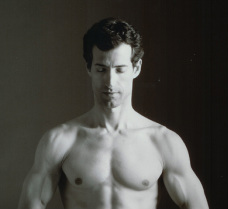 Pilates teaching - it's about awareness. "Feel ..." This one instruction, followed by a reference to the body, or movement, or gravity, or rhythm, or space, is what really sparks the student to begin to understand Pilates. These type of instruction is called "sensory cueing" and requires a certain level of awareness in the student to be effective. The main thing is that the instructor has to have experienced the sensation themselves before they try to use this type of cue. Many times, I hear instructors giving sensory based cueing by "rote". In other words, they heard it said and have memorized it and say it reflexively when they teach. This doesn't work, and can even have the opposite effect by making the student less attentive for an "authentic" direction. An authentic cue is one that the instructor has felt and knows intimately within their own body. This is what is meant when we say "embodiment of skill", and it is what develops only after training for years in the discipline. Some of my favorite Pilates sensory cues are ones that get you to feel your spine lengthen or release. Drawing the tailbone longer away from the head creates more space in the lumbar spine and feels great when having to do leg extensions or swan extensions of the back. Cues that encourage releasing into gravity are also very nice in that they usually allow the student to relax unnecessary tension. Some teachers always teach with awareness, asking the student what they feel from a movement rather than directing their feelings. If the exercise is taught properly, it will reveal things to you that you only need to ask yourself "what am I feeling" when you do it. Pilates will never be boring if you look at it as an exploration of movement and leave your students open to discover new sensations of control, balance, flow, etc. This way you will always be teaching in the moment and feel more inspired every day as you see your students light up with awareness. Meditation is an important part of Yogilates. All Yogilates classes and video programs start and end with guided meditation. This is to bring the focus inward and set an intention of being present and open. In Yogilates, the emphasis is on training the mind as well as the body for optimal wellbeing. Some people are confused or hesitant about meditation because they don't understand what it is for, or how to do it. In some ways it is easiest to think of meditation as simply learning to relax the body and the mind to help relieve stress. Stress can lead to anxiety, physical tension, distraction, irritability, and a weakened immune system. Therefore, it is vital to one's health to learn how to manage and dissipate stress, and meditation is the tool you can use to do this. 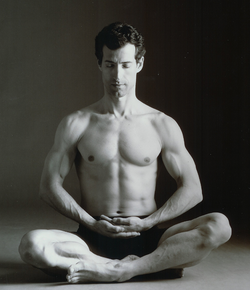 MEDITATION 101 1. To start, find a quiet place - away from noise, bright lights, or other distractions. Turn off your phones so you won't be disturbed. Sit on a cushion with your legs crossed or on a straight back chair with your feet flat on the floor. Place your hands palms up on your thighs and find a balanced position with a straight spine. If you need, place another cushion behind your lower back for support. It is important that you feel comfortable and safe in your space for meditation to be most effective. 2. Close your eyes and listen to your breath. Feel the easy ebb of flow of air in and out of your body and feel a steady stillness in your body. Shrug your shoulders up, then exhale and let them drop. Relax your chest and sink your hips down like roots to the earth. Now begin to "observe" your breath. Do not try to control it yet, just notice the inhalation and exhalation and how each phase of the breath moves the body. Noticing the breath is the first way we bring our focus inward and our attention to the present. It is called "conscious breathing". In yoga, the breath represents "prana" which can be thought of as universal energy that permeates the universe, connecting all things to the divine spirit. 3. Staying with your focus on your breath, begin to lengthen your exhales. Feel your inhalation begin with the diaphragm (located under your ribs in the center of the body called the thorax). Deepen your breathing slightly, without forcing it. Just follow all the air out, patiently waiting until you are truly empty, then feel your inhalation start from a deeper place. Allow the muscles of your forehead, cheeks, and jaw to relax. Soften your eyes and your mouth. With practice, you can let your body and your consciousness float on your breath. Feel lifted and supported with your breath. Stay with your breath in this way for 10 full cycles of the breath. 4. There are many ways to use visualizations to help create inner calm and peace. Here is an example: As you look inward, visualize your mind as empty space, dimly illuminated like a gray cavern. If extraneous thoughts or images pop up into your consciousness, just notice them as separate from you, like floating objects that eventually drift away and disappear. Visualize the grayness like foggy clouds in space. Next, with the tempo of the breath, start to sweep away the clouds with each breath. From behind and above the gray clouds is clear sky and pure light. After all the grayness is swept away, allow your mind to become illuminated with this clear blue, empty sky. Sense the source of the light reflected in the sky as coming from within your heart center. Starting like the sun just poking up from the horizon, it slowly fills up in your heart/mind and the sky is expanded to the heavens. You are now filled with the aura of your divine being. It shines out from the top of your head and surrounds you with a protective layer of peaceful and loving light energy. You do not feel anymore than this; it is a natural, calming, and content feeling. Pure emptiness in the mind frees your heart source. It is ok if strong emotions come to the surface while you meditate. You may start to cry or feel sad. This is normal as your body may need to let go of fear or emotional stress. It is natural, healthy, and will pass. Return to your breath and just enjoy the emptiness and relaxed state of being in the present - in your space - centered, calm, aware. 5.There are many books on how to meditate and how to expand it's benefits. Some of our favorites are: -"Simple Meditation and Relaxation" (Simple Wisdom Book) by Joel Levy and Michele Levy. "Wherever You Go, There You Are: Mindfulness Meditation in Everyday Life", by Jon-Kabat Zinn -"The Power of Now" by Eckhart Tolle. 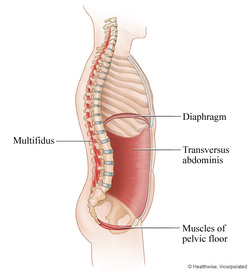 Your posture is key to living efficiently. You can exercise all you want, but if you don't properly position yourself in good alignment in your everyday activities, you will increase wear and tear on your body. In many ways, quality of life issues as we get older are related to poor posture. The first step to improving posture is awareness. Try this simple self-test to check your posture. Stand upright in front of a mirror and see how your feet are aligned. Are they parallel (meaning pointing straight ahead)? How far are they apart? Next scan up to your hips and shoulders. Are they level, or is one side higher or lower than the other? Now, look at the head. Is it tilted to one side, or slightly forward or back? Make note of what you see before you make any adjustments. This will tell you about your habitual stance. Now, stand sideways in the mirror. Check to see how aligned your body is. Draw an imaginary line to divide your body down the middle. See if you ear is over the center of the shoulder, which should be over the middle of the hips, over the middle of the knee, over the middle of the ankle. See the photos at left for examples of correct alignment. For more information on posture and how to check it, please see Ch. 2 in my book, Yogilates - Integrating Yoga and Pilates for Complete Fitness, Strength, and Flexibility. Breathing: Breathing well is living well. A simple exercise to help get you started with this all important function is to sit comfortably with a straight back. You can do this on a firm pillow on the floor with your legs crossed, or on a firm chair with your feet on the floor. Sit as tall as you can, back straight. Place your hands on the sides of ribs and close your eyes. 1. Breathe through your nose and first just notice your breath. 2. Start to notice as you exhale that you can relax your chest and shoulders as you release your breath all the way out, and that your lower belly can draw in. 2. Then, breathe in naturally and fully and feel your ribs expand to the sides while keeping the lower belly drawn in. 3. Breathe into your ribs like this for 4 - 5 more breaths. Notice how with every inhale your upper body can float higher, and with every exhale how the sides come in and down, but also gently lifts you taller from the inside 4. Let your breathing effort subside to an easier one, but still notice how, even in stillness, your breath moves you from your center. I devote much of Ch. 3 in my book to how to breath correctly while practicing both yoga and Pilates.(link) Core: Essentially, the core muscles in the body are those torso muscles that engage to hold your whole body stable during a position or movement. Specifically, the muscles that stabilize the spine, pelvis, ribs, and shoulders, are key to core stabilization. Principal muscles of torso for stabilization are the transverse abdominus, the multifidis, the diaphragm, and the pelvic floor. Other muscles that are engaged from inside the torso to help stabilize include the other abdominals, the gluteals, the serratus and middle trapezius, and the intercostals, which pull the ribs together. When taught correctly, Pilates is the best exercise system to strengthen your core because you are taught to be ever conscious of both stabilization using the deeper core muscles, and to release unnecessary tension from larger muscle groups and from habitual tension spots of the body such as the shoulders, neck, feet, hands, and back. To learn this properly, it is also good to practice yoga with a similar awareness. The breath work of yoga actually helps you to master Pilates technique because only when you learn to use the breath to relax, can you begin to discover a deeper source of grounded movement from your center. This is far superior to traditional abdominal exercises. In addition, because it is synchronized with the breath, it is more advanced than basic stabilization exercises done on physioballs and other unstable devices. In Yogilates(R) you develop stronger core muscles with awareness of how to oppose your own body weight for greater control and skill. The breath work of yoga actually helps you to master Pilates technique because only when you learn to use the breath to relax, can you begin to discover a deeper source of grounded movement from your center. This is far superior to traditional abdominal exercises. In addition, because it is synchronized with the breath, it is more advanced than basic stabilization exercises done on physioballs and other unstable devices. In Yogilates you develop stronger core muscles with awareness of how to oppose your own body weight for greater control and skill. The following exercises help you to understand the connection of your breath with movement from your core. |
Jonathan UrlaMFA, Certified Pilates Instructor and ACE Certified Medical Exercise Specialist, Dancer/Choreographer, Triathlete, Veteran Yoga Practitioner. Also educated in economics and environmental science Archives
March 2016
Categories
All
|


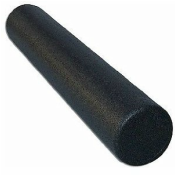
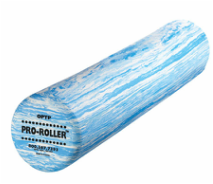

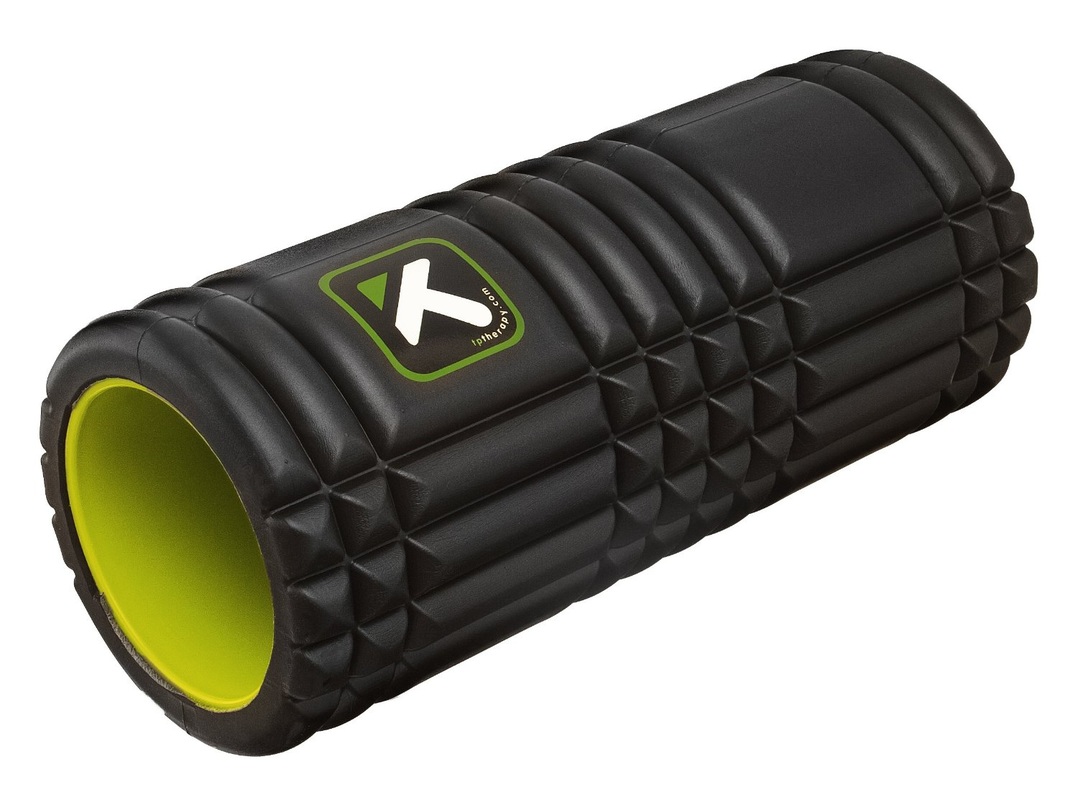


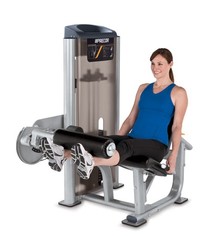
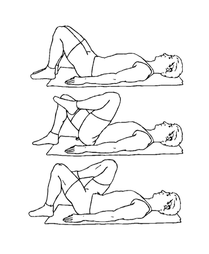


 RSS Feed
RSS Feed
